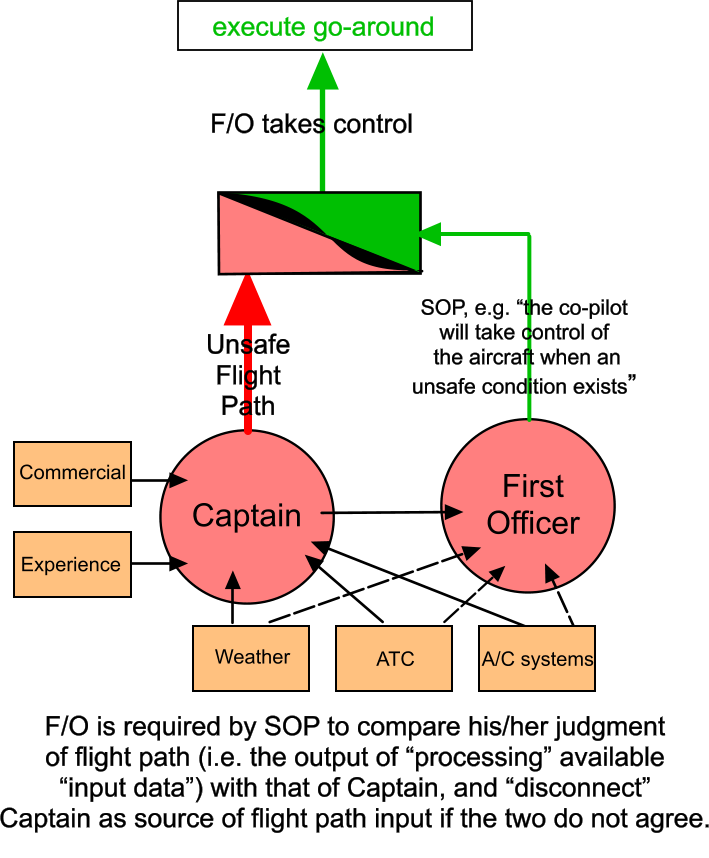Is the crew a "system"?
1990 a crucial question addressing the problem of crew-caused accidents was asked at an SAE conference on "Human Error Avoidance". The keynote speaker, Earl Weener, (at the time Chief Engineer, Airworthiness, Reliability and Maintainability, and Safety, Boeing Commercial Airplane Group, and now a member of the NTSB) asked this question:
"When the operational profile is analysed to establish crew duties, independent checks by the pilot-not-flying, and checklist sequences, how rigorous are we in actual practice? How completely are the assumptions wrung out, documented, and cross-checked? What process is followed when a procedure change is proposed? Who performs the new “failure mode and effects analysis”? Who is in charge of the master "dual-channel integrity" document?"
He's asking, in effect, who analyses crew procedures to ensure that the crew function safely as a system? And the answer is that for the most basic procedure we use, it seems that no-one ever has. If we substitute a standard airline crew, with typical SOPs, as components in the control system just shown, what do we see when the Captain persists with a dangerous approach - the situation faced by the First Officers in the events quoted earlier?
 The nominally less capable and less powerful First Officer is charged with firstly assisting the Captain to achieve his objectives, whilst simultaneously monitoring them for correctness, and if necessary preventing him achieving them. This is the infamous "co-pilot's dilemma" that has been written about many times. It seems to be regarded as an extremely hazardous but unavoidable fact of life, that most pilots hope they will never be faced with. In fact it can be very easily eliminated.
The nominally less capable and less powerful First Officer is charged with firstly assisting the Captain to achieve his objectives, whilst simultaneously monitoring them for correctness, and if necessary preventing him achieving them. This is the infamous "co-pilot's dilemma" that has been written about many times. It seems to be regarded as an extremely hazardous but unavoidable fact of life, that most pilots hope they will never be faced with. In fact it can be very easily eliminated.Procedures or legislation are often invoked to try to mitigate it. Examples include the mid-90s "PACE" (Probing, Alerting, Challenging and Emergency Warning) process developed by Bob Besco and others. More recently specific criteria requiring the co-pilot to take over have been laid down in India following the loss of 158 lives in a B737 accident.
These are really well intentioned attempts to "patch" a fundamentally unsound system. Much CRM training is about persuading individual pilots to overcome the fundamental and obvious weakness of this system, by educating them into changing their personal behaviour and social patterns.
But the effectiveness of CRM training is greatly diminished by our collective failure to recognise this fact, and the internal conflicts it generates. One might ask if crew members in fact subconsciously recognising that there are inconsistencies in what they are being told, so the effectiveness of this element of CRM training is often reduced?